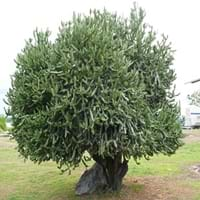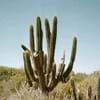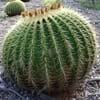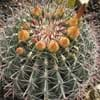Life Span
Perennial
Perennial
Type
Cactus or Succulent
Cactus or Succulent
Origin
North America, Latin America and the Caribbean, Central America, South America, Brazil
Eastern Asia, India
Types
Not available
Not Available
Habitat
shrublands
Temperate Regions, Tropical regions
USDA Hardiness Zone
12-15
10-11
AHS Heat Zone
12-10
Not Available
Sunset Zone
12, 13, 16, 17, 21, 22, 23, 24
H1, H2, 24
Habit
Upright/Erect
Oval or Rounded
Flower Color
White, Yellow, Red, Purple, Orange, Rose
Yellow, Yellow green
Flower Color Modifier
Not Available
Not Available
Fruit Color
Not Available
Pink
Leaf Color in Spring
Not Available
Green
Leaf Color in Summer
Not Available
Green
Leaf Color in Fall
Not Available
Green
Leaf Color in Winter
Not Available
Green
Leaf Shape
Succulent
Succulent
Plant Season
Not Available
Spring, Summer, Fall, Winter
Sunlight
Full Sun, Partial Sun, Partial shade
Full Sun, Partial Sun
Type of Soil
Loam, Sand
Loam, Sand
The pH of Soil
Acidic, Neutral, Alkaline
Neutral, Alkaline
Soil Drainage
Well drained
Well drained
Bloom Time
Spring
Indeterminate
Tolerances
Drought
Drought, Dry soil, Heat Tolerance
Where to Plant?
Ground, Pot
Container, Ground
How to Plant?
Cuttings
Grafting, Stem Planting
Plant Maintenance
Medium
Low
Watering Requirements
Keep ground moist, Keep immersed in water, Requires more often in extreme heat
Average Water Needs, Do Not over Water, Never Over-water
In Summer
Lots of watering
Ample Water
In Spring
Moderate
Average Water
In Winter
Average Water
Less Watering
Soil pH
Acidic, Neutral, Alkaline
Neutral, Alkaline
Soil Type
Loam, Sand
Loam, Sand
Soil Drainage Capacity
Well drained
Well drained
Sun Exposure
Full Sun, Partial Sun, Partial shade
Full Sun, Partial Sun
Pruning
Prune to stimulate growth
Prune if you want to improve plant shape, Remove damaged leaves, Remove dead leaves, Remove dead or diseased plant parts
Fertilizers
6-12-12 or 5-10-10
fertilize in fall, fertilize in spring, fertilize in summer, Nitrogen
Pests and Diseases
Mealybugs, Red spider mite, Scale insects, Slugs, Snails
Powdery mildew, Red blotch, Root rot, Scale
Plant Tolerance
Drought
Drought, Dry soil, Heat Tolerance
Flowers
Showy
Insignificant
Flower Petal Number
Single
Single
Fragrant Flower
Not Available
No
Fragrant Fruit
Not Available
No
Foliage Texture
Bold
Bold
Foliage Sheen
Not Available
Not Available
Attracts
Hummingbirds
Insects
Allergy
drowsiness, Nausea, Vomiting
Skin irritation
Aesthetic Uses
Beautification, Decorating walls, Showy Purposes, Used for decorating walls, fences, gates, hedges, etc.
Beautification, Bonsai, Landscape Designing, Showy Purposes
Beauty Benefits
Not Available
No Beauty Benefits
Environmental Uses
Air purification
Air purification, Erosion control, Food for insects, Very little waste, Wildlife
Medicinal Uses
Aphrodisiac, Tonic
Not Available
Part of Plant Used
extracted oil
Leaves
Other Uses
Used as Ornamental plant, Used for its medicinal properties, Used for Landscaping
Air freshner, Showy Purposes, Traditional medicine, Used as Ornamental plant, Used for its medicinal properties
Used As Indoor Plant
Yes
Yes
Used As Outdoor Plant
Yes
Yes
Garden Design
Container, Houseplant, Rock Garden, Wall
Container, Foundation, Hedges, Houseplant, Mixed Border, Tropical
Botanical Name
ECHINOPSIS pachanoi
EUPHORBIA lactea
Common Name
San Pedro
Mottled Spurge, Frilled Fan, Elkhorn
In Hindi
सैन पेड्रो
Elkhorn
In German
Echinopsis pachanoi
Elkhorn
In French
Echinopsis pachanoi
Elkhorn
In Spanish
Echinopsis pachanoi
cuerno de alce
In Greek
San Pedro κάκτος
Elkhorn
In Portuguese
Wachuma
Elkhorn
In Polish
San pedro (kaktus)
Elkhorn
In Latin
San Pedro
Elkhorn
Phylum
Tracheophyta
Tracheophyta
Class
Magnoliopsida
Magnoliopsida
Order
Caryophyllales
Malpighiales
Family
Cactaceae
Euphorbiaceae
Genus
Echinopsis
Euphorbia
Clade
Angiosperms, Core eudicots, Eudicots
Angiosperms, Eudicots, Rosids
Tribe
Trichocereeae
Euphorbieae
Subfamily
Cactoideae
Euphorbioideae
Number of Species
Not Available
Not Available
Importance of San Pedro and Elkhorn
Want to have the most appropriate plant for your garden? You might want to know the importance of San Pedro and Elkhorn. Basically, these two plants vary in many aspects. Compare San Pedro and Elkhorn as they differ in many characteristics such as their life, care, benefits, facts, etc. Every gardener must at least have the slightest clue about the plants he wants to plant in his garden. Compare their benefits, which differ in many ways like facts and uses. The medicinal use of San Pedro is Aphrodisiac and Tonic whereas of Elkhorn is Not Available. San Pedro has beauty benefits as follows: Not Available while Elkhorn has beauty benefits as follows: Not Available.
Compare Facts of San Pedro vs Elkhorn
How to choose the best garden plant for your garden depending upon its facts? Here garden plant comparison will help you to solve this query. Compare the facts of San Pedro vs Elkhorn and know which one to choose. As garden plants have benefits and other uses, allergy is also a major drawback of plants for some people. Allergic reactions of San Pedro are drowsiness, Nausea and Vomiting whereas of Elkhorn have Skin irritation respectively. Having a fruit bearing plant in your garden can be a plus point of your garden. San Pedro has no showy fruits and Elkhorn has no showy fruits. Also San Pedro is not flowering and Elkhorn is not flowering . You can compare San Pedro and Elkhorn facts and facts of other plants too.





